Birds
We are seeing encouraging signs of a growing and diverse bird population in the Tawa area.
Like all good Wellingtonians, we just love our native birds. It is an honour and delight to encounter them on our local bush walks and see them visit our backyards or fly overhead (or buzz past you – as do kererū and tūī!). It gives us our sense of place and is part of our unique Wellington ecosystem as we share the environment with this incredible birdlife.
Our reserves provide an ideal habitat for our feathered friends. The abundant food supply available encourages them to stay and thrive here.
One of the key reasons we enjoy these native birds in Tawa is because of the establishment of Zealandia Te Māra a Tāne plus other nearby pest-free sanctuaries. Other key reasons being a) the impact of pest control on allowing the remaining bush remnants to flourish, and b) the continuing efforts in the planting of native tree species to regenerate reserve areas and also in private residents backyards.
Some Present-Day Observations of Bird Populations in Tawa
(Source: Tawa the Tree the community and its reserves by Gilbert Roper)
Sanctuaries for breeding
Since 2000, Zealandia has provided a protected location of 230ha for the safe breeding of native bird species within a predator proof fence. Also, other sanctuaries such as the Porirua Scenic Reserves and Rangituhi/Colonial Knob, as well as pest free offshore islands such as Mana Island and Kāpiti Island provide havens for birds to breed and then spread beyond their existing habitats.
Pest control
Regular pest control in the bush reserves of Tawa has also reduced the numbers of stoats, weasels, rats and possums and has resulted in increased food supplies being made available for birds. Consequently, the recordings of more native bird sightings in adjacent suburbs are regularly publicised.
Local personal sightings
Many residents in the Tawa community today have sighted an increased population of tui in the Main Road and beyond, while kākā have been seen overhead on the SH1 off-ramp into Tawa. Kākā have been heard and sighted by residents in and around Kiwi Crescent. Verbal indications from members of the community have identified the red-crowned parakeet (kākāriki), bellbird (korimako), New Zealand falcon (kāraerea) and frequent kererū (native wood pigeon) in Tawa reserves, while the shining cuckoo (pipiwharauroa) and morepork (ruru) have also been regularly heard and sighted.
Silvereye (tauhau), grey warbler (riroriro) and fantail (pīwakawaka), are common in local gardens and bush reserves. Paradise shellduck (putangitangi) occasionally nest in trees in Colonial Knob Scenic Reserve and are sighted on Tawa sports grounds. The whitehead (popokatea) is seen and heard in the Porirua Scenic Reserve.
Feel free to add comments on your bird sightings in Tawa native bush reserves in our comments section at the bottom of this page
Native birds you might see

Tūī
Prosthemadera novaeseelandiae
Tūī are seen all over the Tawa area and are boisterous, vocal and visible in our Tawa bush reserves.
They have distinctive white pois/tufts on their throats that bob about as they sing quite melodically (with two voiceboxes!). Tui are also quite good mimics. The fine filament-like feathers on the back of their necks are a beautiful feature and often captured in artwork.
They are very territorial and will vigourously defend areas from other tui as well as other birds species.
Tūī love nectar, honeydew, fruit, foliage and the odd unlucky insect – all of which are abundant in a healthy stand of native bush. The more bush the more tūī. Many residents have also established nectar feeders to encourage tui to visit their backyard.







♫ Song – Credit Department of Conservation bird songs

Kererū – NZ Woodpigeon
Hemiphaga novaeseelandiae
The large somewhat silent guardian of the bush, Kererū are one majestic bird. They have beautiful jade and blue colouring, with a good kiwi white singlet- shaped bib on the chest.
Often perching in one place silently for long stretches, they sometimes then jump scare you as they get the gumption to move on. Their tell-tale loud whooshing wing beat sounds when flying no doubt could be a study of the aerodynamic sound generation of the flapping wing! They also have characteristic display flights that are commonly seen during the summer breeding season. Kererū do have a not often sounded soft deep pigeon like coo. They also seem to be quite happy perching on the powerlines around Tawa near stands of bush. They are very good at just observing….
Kererū can seem a bit clumsy given their size and the challenges of navigating the branches etc when you’re quite a chonky bird. They are also well known for bouts of fermented berry stupour.
They enjoy a diet of newly emerging leaves (eg kowhai in winter), buds, blossom and the berries/fruit in our native bush. Importantly kererū have the ability to eat some of the larger berries, which few other birds can. This helps disperse the seed from those larger berried natives such as karaka, miro, pigeonwood and tawa.
Kererū play a vital role in the regeneration of our native bush and forests.
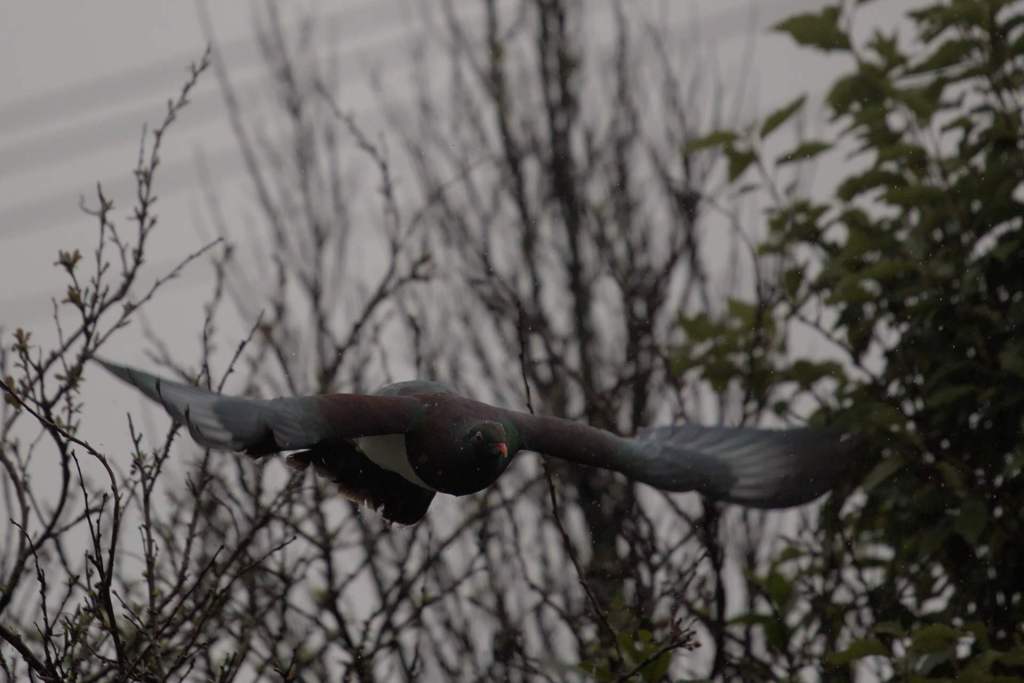



♫ Song – Credit Department of Conservation bird songs
Also see http://nzbirdsonline.org.nz/species/new-zealand-pigeon

Pīwakawaka – Fantail
Rhipidura fuliginosa
These are often seen catching small insects in mid-flight, bouncing about the bush or putting on a fantastic aerial acrobatic display. Fantails are nimble wee birds and are able to pivot quickly like the skilled aerial acrobat they are – with the help of their exquisite fanned tail.
Pīwakawaka‘s high pitched cheeps can often be heard as they follow you around on your bush walk to see what tasty morsels you might disturb.
Their diet consists mainly of small insects, sometimes flushed out very effectively with a deployment of their magnificent tail (which makes up about half the length of this bird)




♫ Song – Credit Department of Conservation bird songs
Also see http://nzbirdsonline.org.nz/species/new-zealand-fantail

Ruru – Morepork
Ninox novaeseelandiae
Our peaceful night-time soundscape is often made all the more serene with the gentle sound of the ruru echoing through the bush or across suburbia.
A nocturnal owl, Ruru are New Zealand’s only surviving native owl. They are able to swivel their head 270 degrees! Morepork have those classic big wide round eyes – super powered to capture every last bit of light and maximise night vision. Ruru are useful in our pest control efforts as they consume small rodents.
♫ Song – Credit Department of Conservation bird songs

Korimako – Bellbird
Anthornis melanura
An olive-grey medium-sized bird, dark red coloured eyes and the most beautiful tuneful song.
Bellbirds are another nectar feeder and their beaks and tongues are particularly well crafted for this task. Korimako feed on the abundant nectar and honeydew in our Tawa native bush reserves along with spiders and insects.
♫ Song – Credit Department of Conservation bird songs

Kārearea – NZ Falcon
Falco novaeseelandiae
A large bird (but not as large as the harrier hawk), kārearea have distinctive brown and cream markings as well as splashes of yellow including their feet.
Kārearea once quite a rare sight, are today more commonly seen on rooftops and in treelines in the Tawa area including around Lyndhurst Park.
It reaches up to 100km per hour. NZ falcon are are equipped with large talons and one very hooked beak – put to good use as they make short work of whatever live prey meal they have caught.




♫ Song – Credit Department of Conservation bird songs
Also see http://nzbirdsonline.org.nz/species/new-zealand-falcon

Kākā – NZ Forest Parrot
Nestor meridionalis
A big bird, resplendent in metallic oilve brown and rusty red, with a striking splash of red under their wings. Kākā have that classic parrot body shape and beak, and the cheeky character to go with it. Their call is a long “ka-aa” as they soar above you or that loud screeching alerting “kraak”.
A welcome addition to our Wellington scene, kākā have been spotted more and more in Tawa over time (as they have migrated northward from Zealandia) – much to the excitement of many a local.
Kākā will tear bark from trees, to get to the sap to feed, to make a nest in the hollow tree, gather insects or nesting material. They also eat seeds, berries and nectar. They can seem to be destructive but tend to cause damage to exotic trees rather than native species.




♫ Song – Credit Department of Conservation bird songs

Pūtangitangi – Paradise Shelduck
Tadorna variegata
The female duck’s feathers are rust brown, jade, black and stippled grey, with some patterning as well as a distinctive white bright head. The males have a distinctive all black head and an overall darker plumage.
Pūtangitangi commonly found in grassland where they feed or in the Porirua stream.
Their call is quite distinctive with a touch of the kazoo about it (have a listen!)
♫ Song – Credit Department of Conservation bird songs
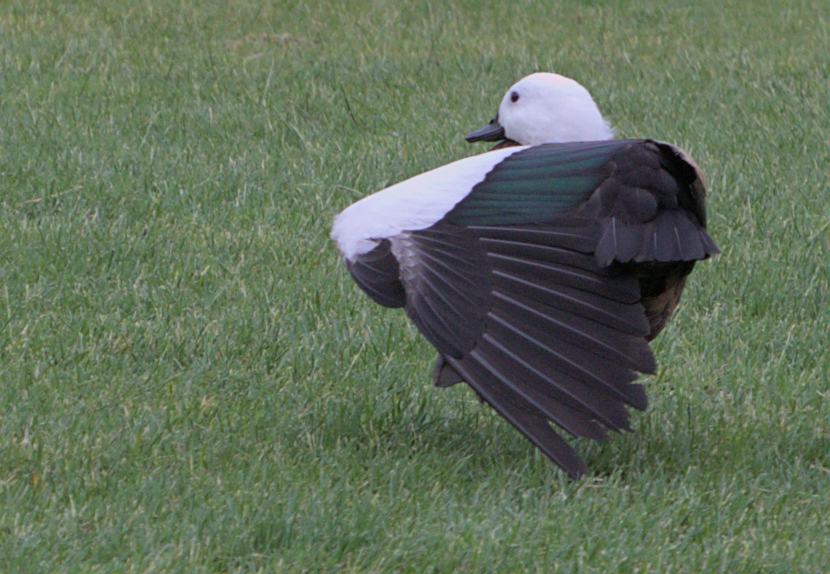




Also see http://nzbirdsonline.org.nz/species/paradise-shelduck

Riroriro – Grey warbler
Gerygone igata
The grey warbler are often heard with their beautiful high trilling song, but not so often seen.
Riroriro are a tiny olive grey bird, with red eyes, weighing only about 6.5 grams. The Riroriro‘s tail feathers have white tips at the end and you can often see that band of white as they flit about.
Grey warblers are wonderful nest builders and will find a twiggy spot to build their impressive abode, dome shaped with a handy side entrance (manuka, kanuka and hedges are good spots). Shining cuckoo are known to make use of their nests and chick raising abilities by leaving an egg in there – to be raised by the grey warbler!
They mostly eat insects and are quite adept at nearly “hovering” to nab them.
♫ Song – Credit Department of Conservation bird songs
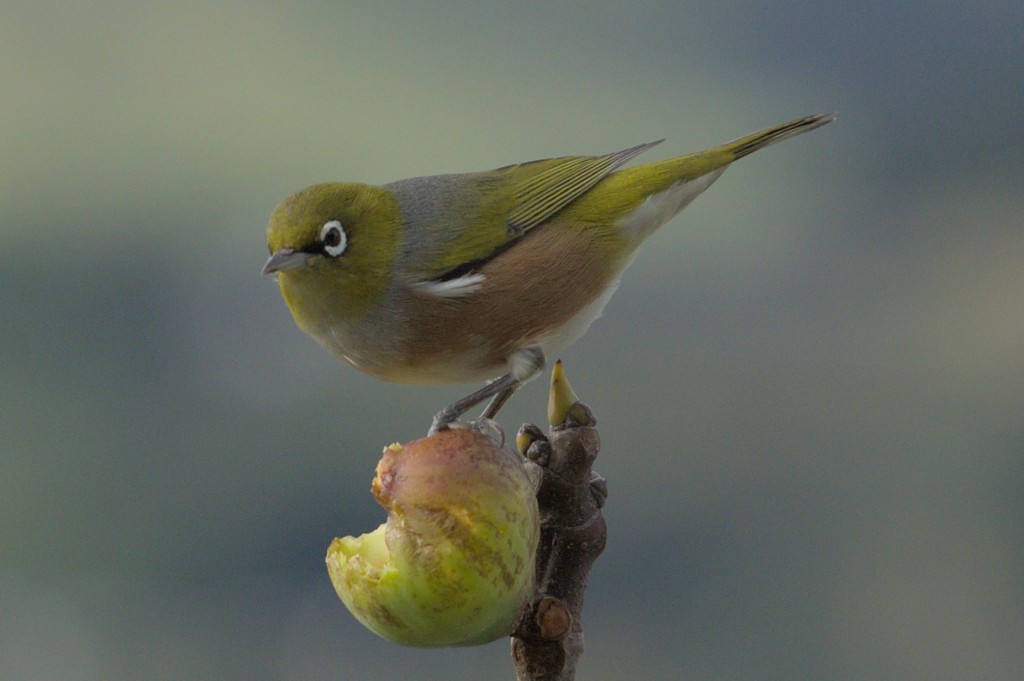
Tauhou– Wax Eye
Zosterops lateralis
Waxeyes (or Silvereyes) are a tiny olive green bird, with a distinctive white ring around their eyes. The Tauhou‘s underbelly is a buff colour, with some light yellow on the edges of their wings, they have a short sharp beak.
Waxeyes are self-introduced to New Zealand. Tauhou (meaning stranger in Maori) eat fruit and nectar and mainly small insects such as caterpillars and spiders. They will often forage in small flocks. An important part of our native ecosystem Waxeyes spread native seeds such as coprosma and kahikatea, assisting in pollination.
They keep in contact with high-pitched peeps and have a lovely twittering song.
♫ Song – Credit Department of Conservation bird songs

Kōtare – Sacred Kingfisher
Halcyon sancta
A beautiful, statuesque at times, medium-sized bird with blue and buff yellowish plumage, Kōtare are often heard sounding their ‘kek-kek-kek’ territorial call.
Kingfishers often nest in the hollows of trees or in banks and return to the same one over and over.
Seemingly built for diving with a spear like beak they often do a spot of fishing, even on goldfish in backyard ponds. Kōtare also feed on insects, spiders, lizards, mice and even small birds.
Also see http://nzbirdsonline.org.nz/species/sacred-kingfisher

Kākāriki – Red-crowned parakeet
Cyanoramphus novaezelandiae
A smart little parrot, mainly bright green, with a dash of blue on the wing feathers and a red crown adorning its face. Kākāriki are now common in Redwood Bush.
There is a plentiful supply of food in our bush stands, such as berries, fruit, seeds and insects.
♫ Song – Credit Department of Conservation bird songs
Also see https://nzbirdsonline.org.nz/species/red-crowned-parakeet

Pīpīwharauroa – Shining Cuckoo
Chrysococcyx lucidus
Shining cuckoo lay an egg in a grey warbler’s nest for them to raise. It’s not all good for the grey warblers either as the newly hatched chick proceeds to boot out the grey warbler chicks.
Pīpīwharauroa are a beautiful bird, with lovely banding across their front and iridescent green feathers on their back. Their song is also beautiful and distinctive with it’s long descending tail notes.
They eat mainly invertebrates such as caterpillars.

Pūkeko- Purple Swamphen
Porphyrio melanotus
Pūkeko are similar in colouring to Takahē but are a lot smaller. Their feathers being vivid dark blue and black with a solid red beak, long red legs and a white fluffy tail.
Self-introduced they are very common in wetland areas. It’s thought they probably landed here from Australia a long while back, perhaps blown off course. Often found in swampy areas they feed on the roots of plants but also eggs, frogs, fish and the like.
Pūkeko often exercise short bursts of flight and can be loud and defensive.




Gallery of Non-Native Birds you might see
Introduced or visitors


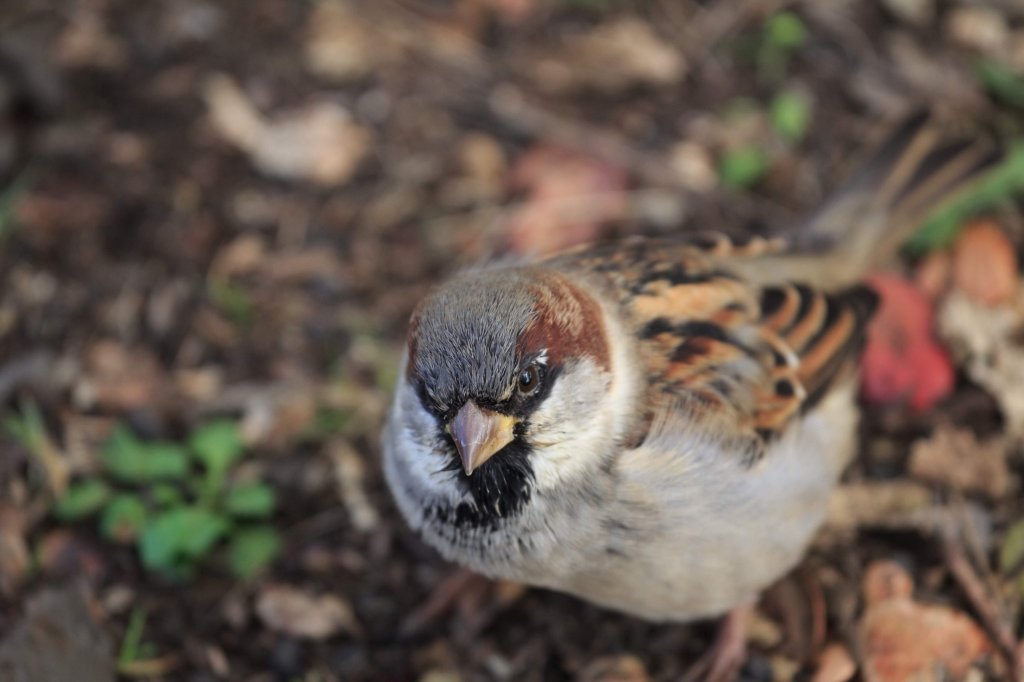













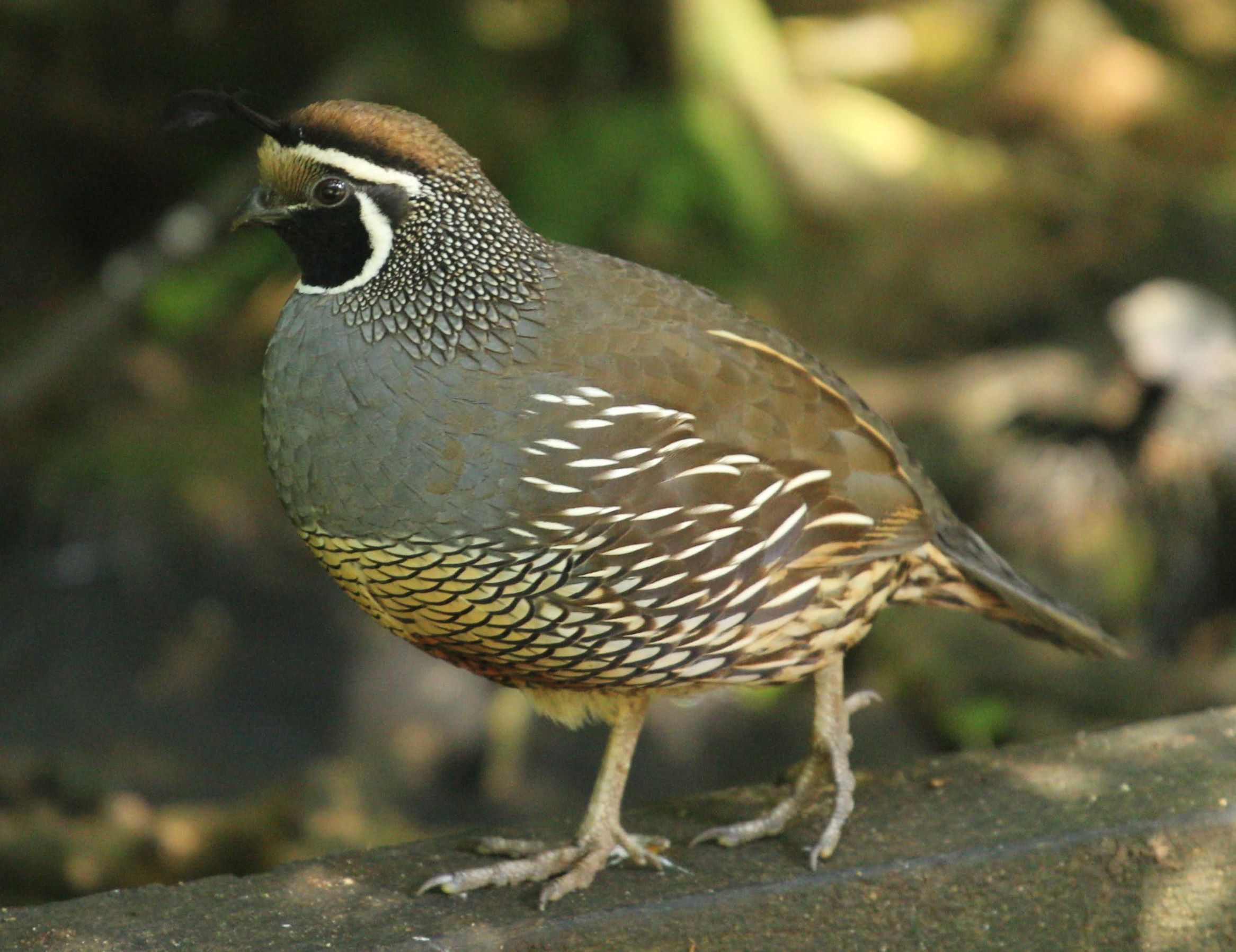
Also chaffinch, greenfinch, skylark, yellowhammer, magpie (photo’s coming)

Repository of Radio NZ bird calls
Hop over to the Radio NZ website to Listen again to some of your favourite early morning wakeups from RNZ
Recent Posts about bird life in Tawa
Birds in the Native Bush Reserves in Tawa – a bit of History
Early writers and settlers from the Tawa region describe with enthusiasm the abundance of birdlife that existed in the local bush. Carman (1956) refers to Elizabeth Greer who recounted travelling on a bullock dray in 1851 to settle in the Tawa area.
The forest was full of native birds, and all pioneers have commented on the clouds of green parakeets and pigeons.
Krull (2012) also gives his initial impressions on arrival in the area in February 1859.
The wonderful forest scene is enhanced by thousands of birds. A small green parrot with a long tail, a red topknot and blue feathers in its wings is the commonest bird here. [kākāriki – author]. There were thousands of them hopping about and swarming around us. But we also heard many singing birds with prettily coloured plumage.
Birds Prevalent in the 1850s Best (1914) refers to the birdlife which would have been observed by settlers of the 1840s to 1850s
Best (1914) refers to the birdlife which would have been observed by settlers of the 1840s to 1850s:
The birds formerly found in the forest of the district are:
Makomako, or bellbird; Tieke, or saddleback; Weka, or woodhen; Pitoitoi, or robin; Tui, or parson-bird; Kakariki, or parakeet; Titi-pounamu, or bush wren; Tateto, or whitehead; Kereru, or pigeon; Pihipihi, or blight-bird I (appeared in 1856); Kaka, or brown parrot; Tihe, or stitchbird; Piwakawaka, or fantail; Ruru, or morepork; Miromiro, or tomtit; Koekoea; Pipiwharauroa, or shining cuckoo; Riroriro, or grey warbler; Kahu, or hawk; Whioiii or lark; Kotare, or kingfisher; Karearea, or sparrow-hawk; Matukutuku, or blue heron; Teteiii, or brown duck; Parera, or grey duck; Papango, or black tealiv.
The bellbird, tui and parakeet were very numerous. The stitchbird was common and always seen in pairs, and usually in gullies. The grey warbler was common, and we have found thirteen eggs in one nest. Pigeons were numerous in the ‘forties and fifties’ but became scarce before the forest was destroyed. The bittern does not seem to have been known at Porirua. Occasionally one is seen in the Otaki district.
The Māoris of the Otaki district say that the kakapo was formerly found on the hills about Manakau and Ohau, but that it disappeared suddenly about sixty or seventy years ago. A half-caste now about sixty years of age relates that in his youth, he used to hear the old Natives speculating as to the cause of its disappearance.
The huia was not found in Porirua. The one seen by E. J. Wakefield and some Natives on the right bank of the Korokoro Stream in 1840 is the nearest seen to Porirua that we know of. Thirty or forty years ago they were fairly numerous between the Hutt and Waio-tauru Rivers, and some were obtained in that district at the time of the despatch of the troops to South Africa. (in 1899).
Secker (1978) also describes the birdlife of Tawa Flat and surrounding districts in Elizabeth Greer’s early years when her family settled the area in the 1851. In the 1850s and early 60s the bush would have been alive with the sound of bellbirds, tuis, the strident screech of the kaka, the heavy laboured beating of the pigeons flying overhead and the incessant chattering of parakeets who found the bush clearings to their liking. The avian fauna however brought problems to settlers. Parakeets and wekas wrought havoc among crops while other species spoiled the ripening orchard fruits.
The balance of nature however was soon altered and by 1875 such decimation of the avian population had occurred that the Wellington Provincial Government made it illegal to destroy any of these birds.
Notes on Best’s (1914) Descriptions
iblight bird is the silvereye, also called tauhou in Māori.
iiWhioi is not listed in ‘NZ Birds Online’. A possible mis-spelling, and may have been the pipit, or pihoihoi.
iiiTete is the grey teal, not the brown duck, so this is a mis-identification. Although the brown teal/pateke is not mentioned by Best, they have been introduced and are now reproducing in Zealandia. A few birds have been sighted in the Hutt Valley, near Pencarrow and in the wetland at Te Papa.
ivPapango or black teal is also named as the New Zealand scaup.
Roper Gilbert, 2017: Tawa the tree, the community and its reserves pp 149-156. Tawa Historical Society.

Other NZ bird sites and information to explore
NZ Birds Online https://nzbirdsonline.org.nz/
NZ Birds https://www.nzbirds.com/
Wellington City Council– Forest Birds of Poneke video story
Department of Conservation
- Forest bird identification – excellent short course on NZ forest birds
- Threatened Birds lists – list of nationally critical, endangered and vulnerable birds
Forest and Bird
- Native plants that attract native birds – food sources
- Bird of the Year competition – vote for your favourite NZ bird
Take part in the the New Zealand Garden Bird Survey – https://gardenbirdsurvey.landcareresearch.co.nz/

Credit: Most images thanks to Paul Bouda unless otherwise credited




Eastern rosella sighted at south end of Brasenose Park, Redwood Bush Wednesday 8 December 2021 at 1pm.
LikeLike
Kākāriki sighted and heard in Redwood Bush near track between Brasenose Place and Achilles Close, Wednesday 15 December, 2021 about 2pm.
LikeLike
New Zealand Falcon landed on our aviary about 1.30pm today 26.03.2023
Main Rd Tawa
LikeLike
two tui’s calling to each other. Entrance to Redwood bush by Peterhouse Street. Thursday 17th at 10:30am
LikeLike
Ruru (morepork) sighted upslope of main track Brasenose Place end of Redwood Bush when checking bait stations Monday 27 December at 11.30 am
LikeLike
Tui chasing karearea on Main Rd. By BP.
The falcon then perched in a tree by Tawa school before flying away.
10 January 2021 4pm
LikeLike
Tuesday 11 January 2022 2.30pm. Three kererū sighted near Peterhouse Street entrance of Redwood Bush feeding in the canopy off tawa fruit.
LikeLike
Male and female California quails walking through our front garden then into our neighbours back garden. 2nd Jan around 3pm, Top of Sunrise Boulevard (bush side)
LikeLike
pair of Kākāriki flying over Larsen Cres and Oriel Ave area (from Redwood Bush and heading to who knows where…..) on two occasions – 28th and 31st January. Distinctive chattering as they flew
LikeLike
A Kererū came to visit and sit for awhile in a tree in our garden on Rembrandt Ave, Main Road side of the street and then had a lovely long rest in our pine tree.
LikeLike
Saw a Kaka in Redwood Bush, just above Brasenose Park, Thursday 5th May, around 1pm
LikeLike
Four fledgling kakariki were heard and then sighted in Redwood Bush yesterday (Monday 14 November 2022) at 10.30am. This was near the track by the huge pukatea trees where the stream crosses the track.
LikeLike
Four juvenile kakariki were heard and then sighted at 10.45am on Monday 14 November 2022 in Redwood Bush near the huge pukatea trees where the stream crosses the track.
LikeLike
Gil Roper reports that four juvenile kakariki were heard and then sighted in Redwood Bush on Monday morning 14 November, 2022. They were seen by members of the U3A Botany group near the two huge pukatea trees, beside the stream that crosses the track in the gully between Achilles Close and Peterhouse Street. As these birds were much smaller than adult birds, with their green plumage and a red top notch on their heads, it is an indication that they have recently fledged from a Spring nesting in Redwood Bush. This is an indication of the effectiveness of pest control being undertaken, plus the food availability in the bush.
LikeLike
Kārearea spotted today in bush west of Westhaven Drive.
LikeLike
Usually hear Morepork calling most nights in bush strip between Lyndhurst Park and Tainui Terrace
LikeLike
Two fledgling fantails were sighted being feed by adult fantails in Redwood Bush (Tuesday 4 January 2023) at 4.30 pm. This was on the track near Information board No. 3.
LikeLike
Two beautiful kakariki sighted near Lyndhurst Park, 12 January 2023 about 6:30pm
LikeLike
Karearea NZ Falcon perched in my garden yesterday, 31st March 2023, St Johns Terrace.
LikeLike
Tuesday evening between 8 and 9pm (4/7/2023) a small Ruru (possibly female) landed on our aviary. It sat watching the resident birds then flew off to the east. Our location is Main Rd near BP.
LikeLike
Thursday morning approx 8am (20/07/2023), a Karearea NZ Falcon was perched in our tree, Kereru Bend.
LikeLike
Thursday 24 August 4;30pm. Ruru perched in the rafters outside the Tawa Community Centre
LikeLiked by 1 person
Tuesday 30 Jan 2024, Kereu feeding on a Karaka berries North Street Linden. Stunning photo posted on the Tawa community Facebook page.
LikeLiked by 1 person
Kereru flew onto tree out front of property on Rembdandt Ave Tawa, sat for a moment but started from us looking at it through window and flew up into bush on splicers side of road.
LikeLiked by 1 person